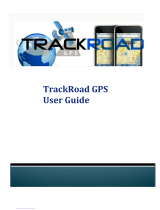
Because of differences in vehicle manufacturers, best placement will vary by
vehicle. If signal strength seems to be weak, move the device to a different
position and check the platform to see if the device has connected and is
reporting.
Once the unit has been installed, take the car for a drive for 15-20 minutes so the
device can register on the GPS network and begin reporting. The Livewire 4 is
motion activated; it will only attempt to communicate with the platform when
motion is detected, which will update the tracker’s position on the map.
The Red and Green LEDs on the label side of the device are intended to help
you troubleshoot problems with your tracker. When the car’s ignition is turned on,
the device will power up. The GPS Light (RED) should begin to flash followed by
the Cell Light (GREEN). The GPS Light will turn solid once a GPS signal is
located. The Cell Light will slow down, but continue to flash once it has
connected to the cellular network.
The Red and Green LEDs on the back panel of the device are intended to help
you troubleshoot problems with your Livewire. When the car’s ignition is first
turned on, the device will power up. The Green LED will show solid for
approximately 30 seconds (there may be some brief flickers at first while the
processor initializes). At no other time should the Green LED remain solid for
such a long period.
























